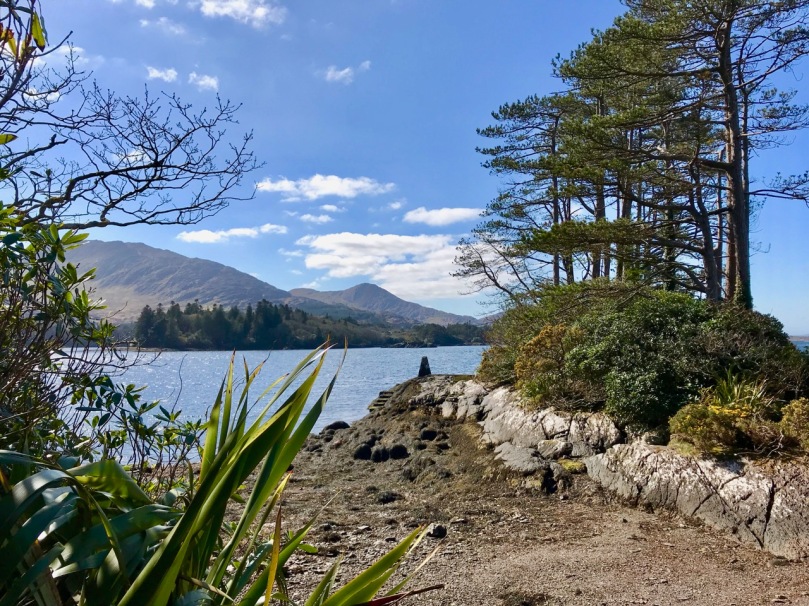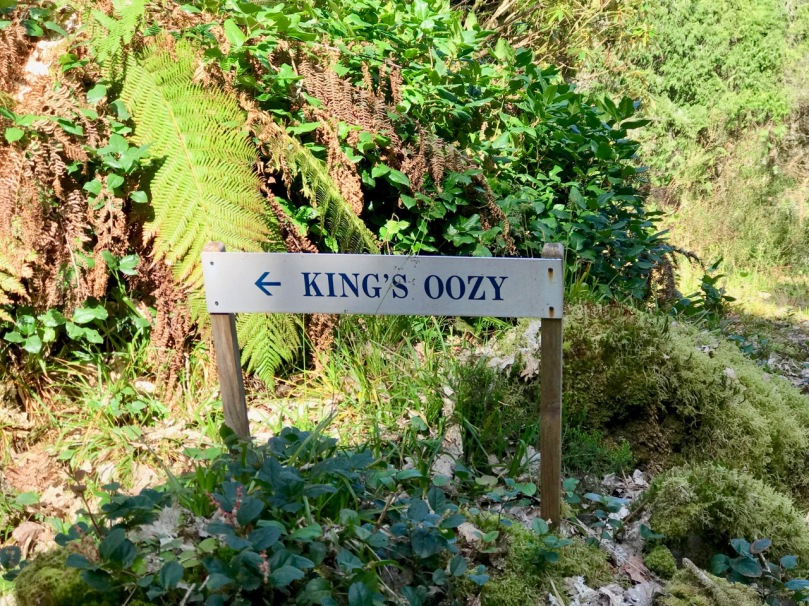The spectacular landscapes of the Beara Peninsula draw us again and again: have a look at some of our past explorations here and here. There’s no doubt that for fine, distant views, tranquil coastlines and variety in geology, history and archaeology this part of Ireland takes some beating. And, for us, it’s ideal: near enough that we can have a full day out absorbing all these things, yet still being home in time for tea!
This is the weekend when clocks ‘spring forward’ – giving us longer evenings. But also the sun is getting noticeably stronger, colours are getting more intense, and the shadows are hardening. It’s a great time to be out on our travels.
That’s Hungry Hill above – highest peak in the Caha Mountain range, Co Cork – and the background setting for Daphne du Maurier’s 1943 novel of that name. The story is based on the real-life Puxley family who set up and ran Allihies copper mines in the first half of the nineteenth century. Du Maurier weaves the tale to give the name of the hill a symbolic meaning – the mines ‘swallow up’ the lives of those who work them and the plot is charged with tragedy and unhappiness.
We crossed the peninsula on the Healy Pass, one of Ireland’s great road journeys, with breathtaking views towards Bantry Bay in the south and the Kenmare River to the north as you traverse the 334 metre summit. The road, known in Irish as Bealach Scairte, was originally cut as a nineteenth century famine relief project, and improved in the 1930s, when it was named in honour of Tim Michael Healy, a Cork man who served as the first governor general of the Irish Free State.
We had a mission: to visit Dereen Garden, which is open all year round. We were there before the tourist season got going, and we mainly had the beautiful walks and vistas to ourselves. The woodland garden was laid out 150 years ago with sub-tropical plants from around the world and has been improved and added to since then; it is famous for its huge Arboreum rhododendrons. Evidently there is a variety of wildlife to be seen, including red squirrels, sitka deer and hares, but they were all keeping out of the way when we visited.
We were hoping to sample some of the fine eateries which have been set up on the Beara but, again, we were a little too early in the year: an excuse for another trip when they open up. So we reluctantly turned our way back towards the Healy Pass – to get the views from the other direction – and were stopped in our tracks by a sign pointing to ‘stone circles’. This is in a townland named Cashelkeelty and is near Lauragh, Co Kerry. Finola had a look at her archaeological records on the phone and found it was somewhere we had to go! It involved a long, uphill walk through a forest, but was very well worth it. Read Finola’s post to find all the details.
I will show only one picture as a taster (above) – but also to point out the proximity of the high grade overhead powerline which runs right by the ancient stones. Does it add or detract from the monument itself?
There were many more vistas to be taken in on our few hours spent on this dramatic peninsula, where mountains so spectacularly meet the sea. We can never tire of this, our own little part of the world.





















What a wonderful life you have and you both manage to transport us there beautifully on a weekly basis. Thank you
LikeLiked by 1 person
You are quite right, Sandra – our life here is idyllic. Thank you – and it’s good to inspire other to visit this wonderful place.
LikeLike
Feeling a bit homesick reading this! Can’t wait to see an oozy either.
LikeLiked by 1 person
It’ll be worth the wait!
LikeLiked by 1 person
Dereen looks a lot like where we are, but on a smaller scale.
LikeLiked by 1 person
Yes, we get the sub-tropical but without the long journey…
LikeLike
Love your blog which I get via email. it just reaffirm how wonderful our West Cork is.
Beara is also my favorite escape ..
I learnt something also … and I almost corrected you ….
I look out at both Cnoc Bui (Knockboy) and Hungry Hill and I know Cnoc Bui as the highest mountain in the area , higher than Hungry Hill but of course it’s in the Shehy range. So you are right, our monolithic Hungry Hill is indeed the highest in the Caha range. Keep up the good work … thanks for the reminders of places I need to revisit and discover❤️
LikeLiked by 1 person
You’re welcome, Siobhan. Yes, so many places to visit…
LikeLike
Robert, what is an Oozy?
LikeLiked by 1 person
An excellent question Shauna! I’m sure here it means a soft, muddy place close to the sea-shore. The word ‘Squelchy’ also comes to mind…
LikeLike
Just googled it Robert! King’s Oozy is a beautiful place in the
Derreen Gardens – your photo with the huge palm tree
LikeLiked by 1 person
Spectacular!
‘King’s Oozy.’ And why not.
LikeLiked by 1 person
Thank you – there are more Oozys! You’ll have to visit to find them…
LikeLike